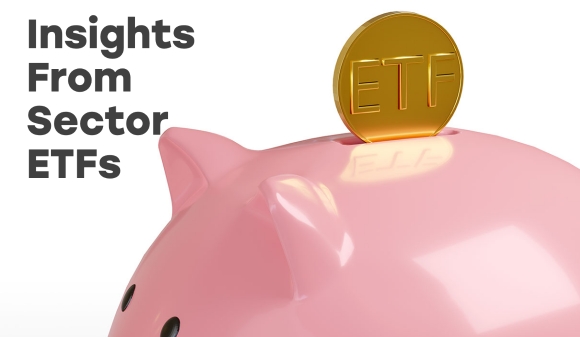Insights From ETFs: How Many ETFs Should I Hold in My Portfolio?

 Exchange-Traded Funds (ETFs) are a great tool for portfolio construction as they help us to quickly achieve diversification in different sectors, geographies and asset classes. They are also great for “testing the waters” in a market or industry about which you do not know enough and for getting quick access to markets that are otherwise illiquid or have high transaction costs (ex. international securities). However, with thousands of options at a low cost, many investors develop “ETF fever” and end up purchasing several ETFs with overlapping exposures, not diversifying their portfolio properly or even “over-diversifying” their portfolio. So how many ETFs should investors hold in their portfolios in order to be properly diversified? Well, the answer is, like many things in investing, it depends.
Exchange-Traded Funds (ETFs) are a great tool for portfolio construction as they help us to quickly achieve diversification in different sectors, geographies and asset classes. They are also great for “testing the waters” in a market or industry about which you do not know enough and for getting quick access to markets that are otherwise illiquid or have high transaction costs (ex. international securities). However, with thousands of options at a low cost, many investors develop “ETF fever” and end up purchasing several ETFs with overlapping exposures, not diversifying their portfolio properly or even “over-diversifying” their portfolio. So how many ETFs should investors hold in their portfolios in order to be properly diversified? Well, the answer is, like many things in investing, it depends.
Rule of Thumb
Most ETFs that we are asked about at 5i Research have relatively broad exposures across sectors and are usually meant for getting exposure over a particular geography (i.e. S&P 500 ETF for U.S. or a TSX ETF for Canada). For these ETFs we do not see a reason to hold a position of less than five per cent due to their broad and “indexed” nature and the minuscule impact any particular security held by those ETFs can have on a portfolio when positions are that small. Setting a rule of five per cent helps investors avoid owning too many ETFs and essentially sets the limit at 20 ETFs (100/5) if a portfolio consists solely of ETFs. Deciding on the weighting of a position for a stock is very different than deciding on a weighting for an ETF. Stocks are a concentrated ‘bet’ on one company while ETFs can sometimes be enough to cover an entire geographic allocation. With stocks, a normal position is anywhere between 2-5% depending on the risk level of the stock and how confident you are in the investment. Even a 10% position can be justified, however, this is considered quite high among most investors because something as minor as a company coming up short on earnings estimates, or a change in management strategy can be really move a stock. Since ETFs almost completely remove this layer of company-specific risk, this allows for much larger positions to be taken single ETFs. To illustrate, think of holding five gene-editing companies at two per cent each compared to owning a gene-editing ETF at 10% which holds 100 companies. If we assume the weightings of the companies in the ETF are equally-weighted (one per cent each), then your exposure to any single company would not exceed 0.1% of your portfolio (1% x 10%). That is a factor of 20 when compared to holding a two per cent weighting in one single company.
A general rule is that funds with broader exposure can have a higher allocation than narrowly focused funds. The number of companies held in an ETF and the factors that affect the underlying holdings are also relevant factors to consider. Investors should also consider how much an ETF is exposed to a single driver (say interest rates). The higher the exposure to that single driver, the lower you might want your weighting to be. For example, a fund like BMO Equal Weight Oil & Gas Index ETF (ZEO) which only holds nine companies, actually has high company-specific risk, but it is still limited. If say, Pembina Pipeline Corp — which has a ~10% weighting in the fund — goes bankrupt or faces a major scandal and sees a 50% correction in its stock price, all things constant, the fund will only fall by five per cent. That is some protection, but a five per cent drop for an ETF is still quite steep. Adding in the commodity and cyclical risks of the oil and energy sector, an investor may want to limit investment in this ETF to say 5-7% (depending on the rest of the portfolio).
Watch for Overlap of Funds
Investors often make the mistake of owning two or more funds with much of the same exposure, without accounting for a change in concentration. For example, you will often get very similar results holding either BMO S&P 500 Index ETF (ZSP) or Vanguard U.S. Total Market Index ETF (VUN) since there is about an 80% overlap in these two funds. You are often better off monitoring just one of them in your portfolio rather than two. This saves you time, transaction costs and sometimes fees. Another common dilemma investors face is having to choose between say, the S&P500 index ETF (SPY) and a similar ETF with strategy tweak like Invesco S&P 500 Low-Volatility ETF (SPLV). An investor might really be after the low-volatility strategy but chooses to hold both to be on the safe side. However, this may only dilute the desired low-volatility strategy, diluting much of the reason an investor would hold the SPLV fund in the first place. As a general active investing rule, if you think an ETF has an advantage over a broader benchmark, “own” that advantage or edge and don’t dilute the benefits away by owning various overlapping and interrelated funds.
Asset Allocation as a Guide
There is no right or wrong answer for what the ideal allocation mix is. Investors have different convictions, views, and investment philosophies. You may see it befitting to hold 40% of your portfolio in the industrial sector, whereas most investors would view that as highly concentrated. However, there are some general rules most people can follow for different asset classes, sector and geography mixes depending on your risk tolerance and time horizon. Knowing that cyclical sectors (Technology, Industrials, Consumer Discretionary) tend to contribute more towards growth while defensive sectors (Utilities, Consumer Staples, Healthcare) with portfolio stability can help guide you in setting limits on ETF weightings. Our portfolio analytics service at 5i Research actually breaks out the underlying holdings of ETFs and Mutual Funds, helping you to understand what you own in real time and where there might be overlap across funds. Tracking and understanding what is in these funds can sometimes be tedious but important to understand the risks and exposure that an investor might not be aware of.
Cores and Satellites
ETFs can also allow investors to take more concentrated positions in individual companies by using ETFs to construct the core of their portfolio and individual stocks as more of an active bet. You may even like a particular company held in an ETF and choose to hold the ETF as broad exposure while holding that company. For example, if an investor has a target exposure to Consumer Discretionary equities of 20% an investor can own Vanguard Consumer Discretionary ETF (VCR) as broad exposure to U.S. consumer discretionary at 10% of their portfolio and own two consumer discretionary stocks at six per cent and four per cent (ex. Amazon: AMZN and Starbucks: SBUX). VCR, in this case, acts as support for the overall Consumer Discretionary exposure for the two stocks. This way, an investor can remain diversified while achieving their desired concentration in the stocks they are willing to own more of.
One ETF Solutions
In recent years, ETF companies like Vanguard, iShares, Horizons and others have made it possible to simply own one well-diversified ETF as your entire portfolio depending on your investor type (ex. Vanguard Balanced ETF Portfolio (VBAL) for a balanced investor) and for very low fees (~0.25-0.50%). In theory, an investor could just hold one of these asset allocation ETFs because they hold multiple ETFs that hold multiple underlying investments. It is probably the lowest cost route to managing a portfolio an investor can find in a passive manner. A fund like this justifies the highest weighting of any type of fund, due to it being diversified across asset classes, geographies and sectors.
So How Many Should I Hold?
By now, we think you get the point that there is no magic number of ETFs to hold in a portfolio. However, a question that could be answered is how many ETFs could reasonably be held in a portfolio? Assuming a portfolio consists of only ETFs, we think using anywhere from 2-15 ETFs is enough to construct a well-diversified portfolio. How many you end up using will depend on how broad or narrow the exposure of each ETF is, with two consisting primarily of broad ETFs and taking a more passive approach and 15 taking a more active approach with sector or theme-specific ETFs. Notice we suggest two funds as a minimum. In reality, one is justified, but over time, we have found that regardless of how diversified that one fund is, investors have a hard time putting all of their funds into a “single investment”, regardless of what is underlying that investment. This, of course, is totally reasonable and to avoid that psychological stress, it can be easier to simply hold two funds.
Disclosure: Authors, directors, partners and/or officers of 5i Research have a financial or other interest in XIT and ZRE.


